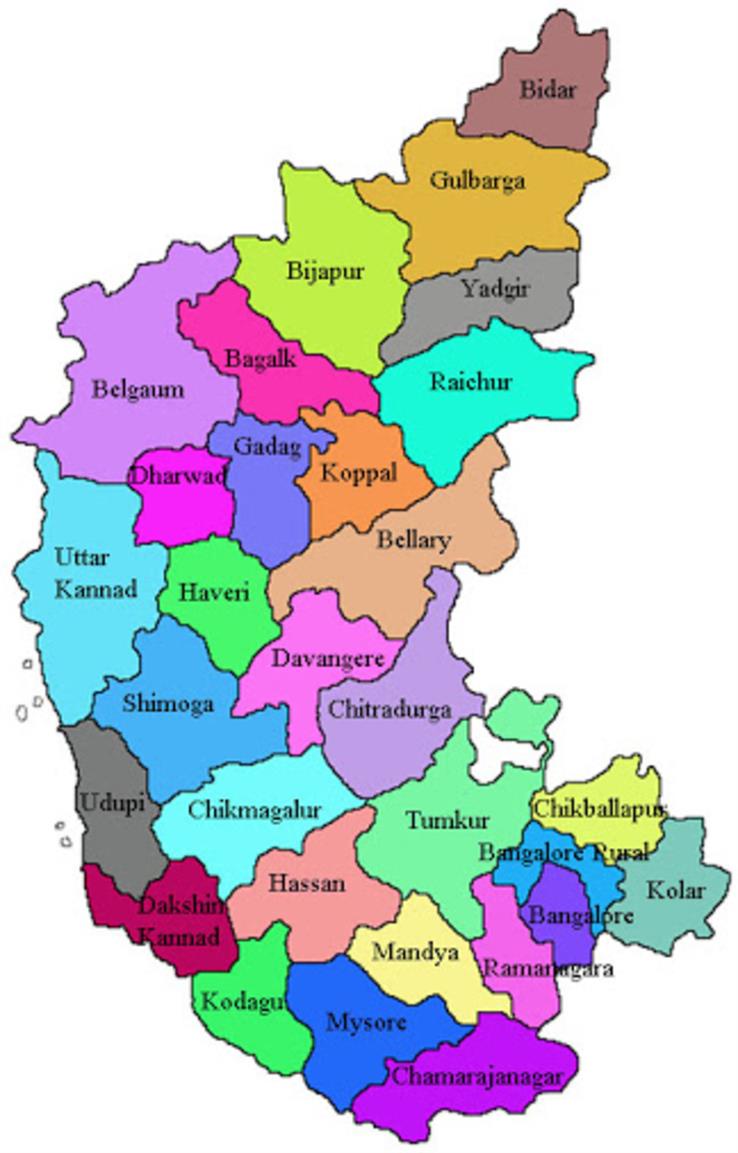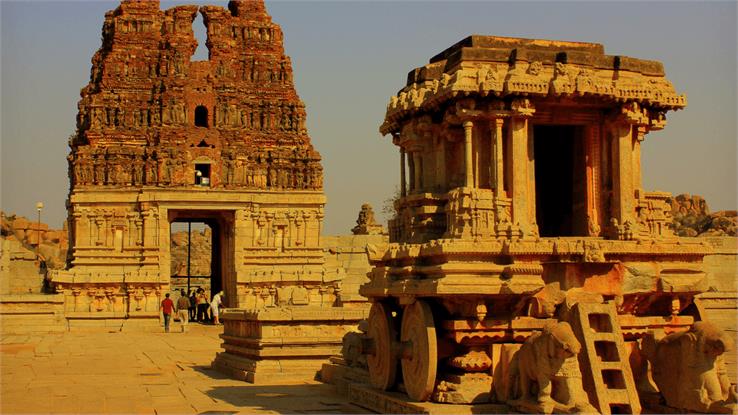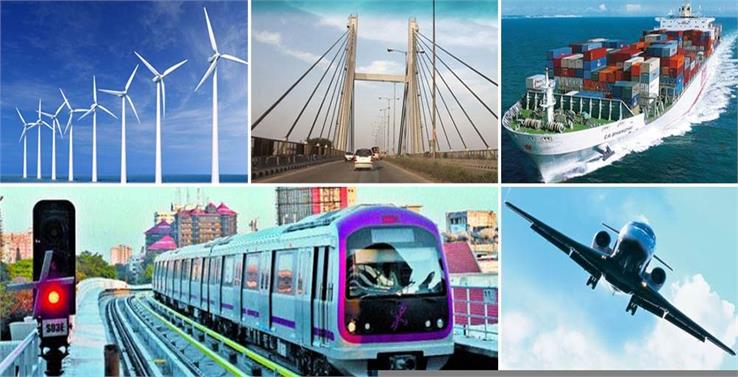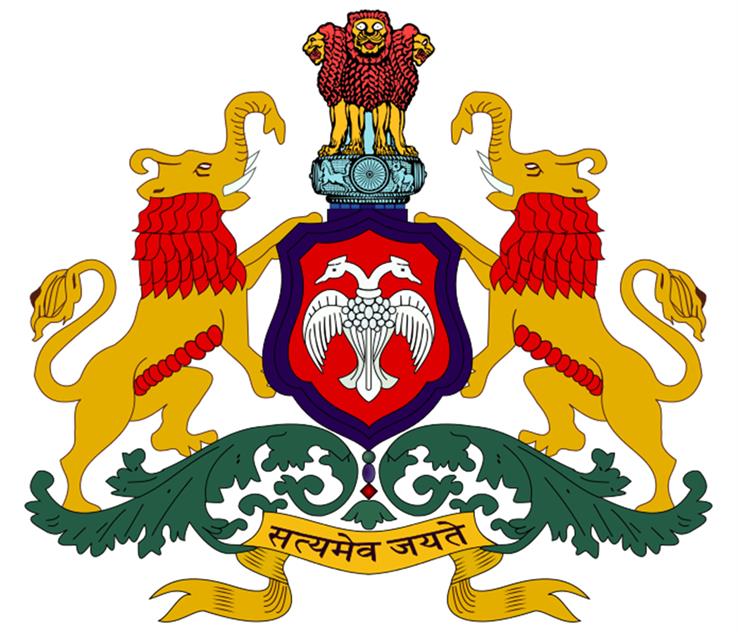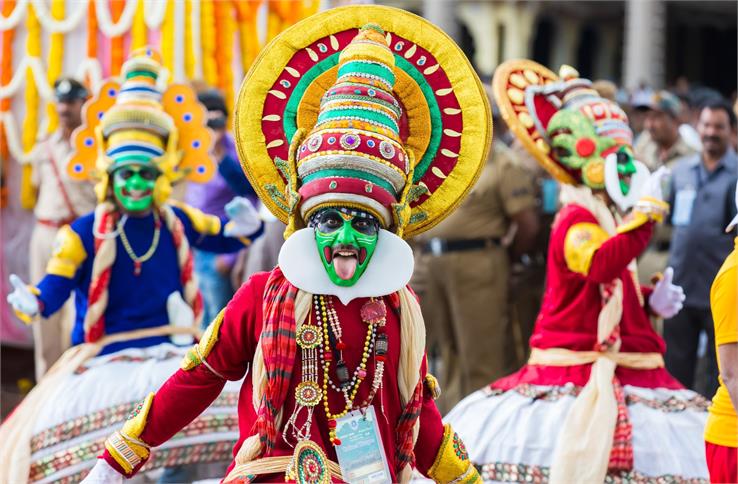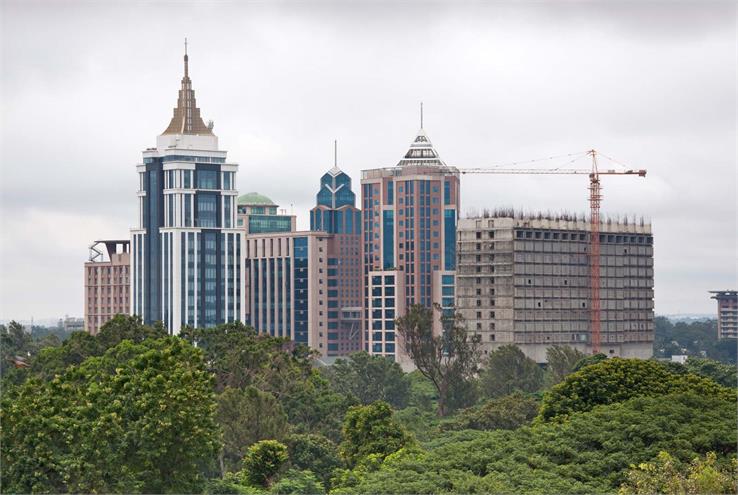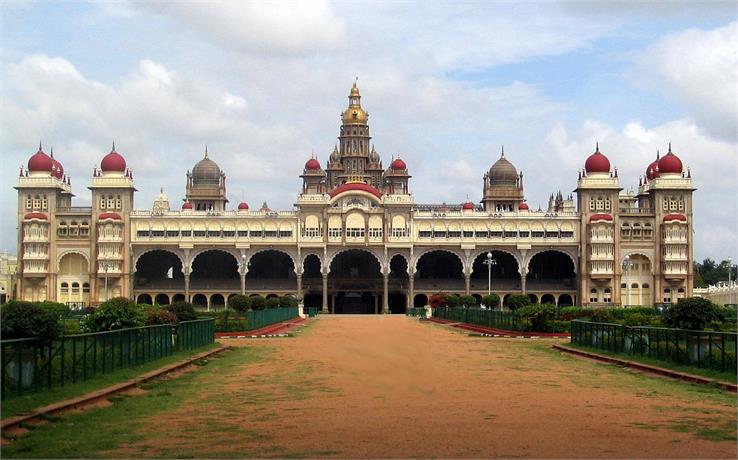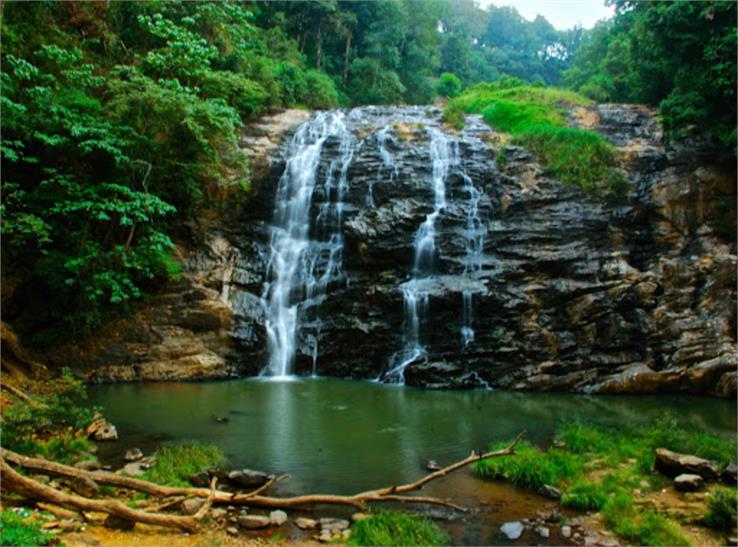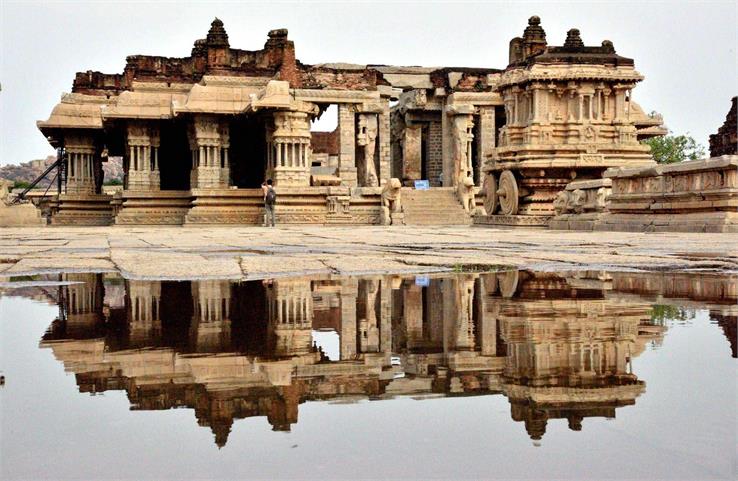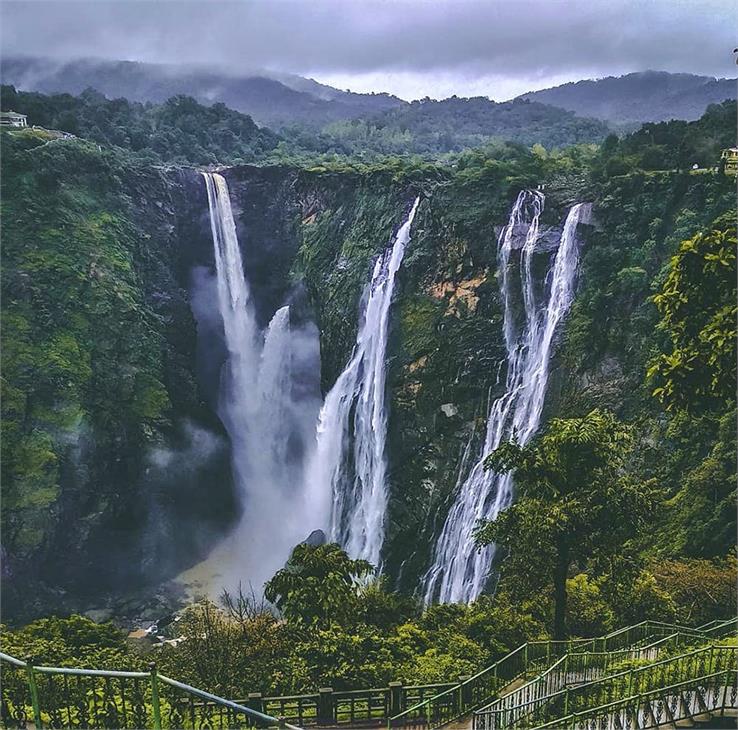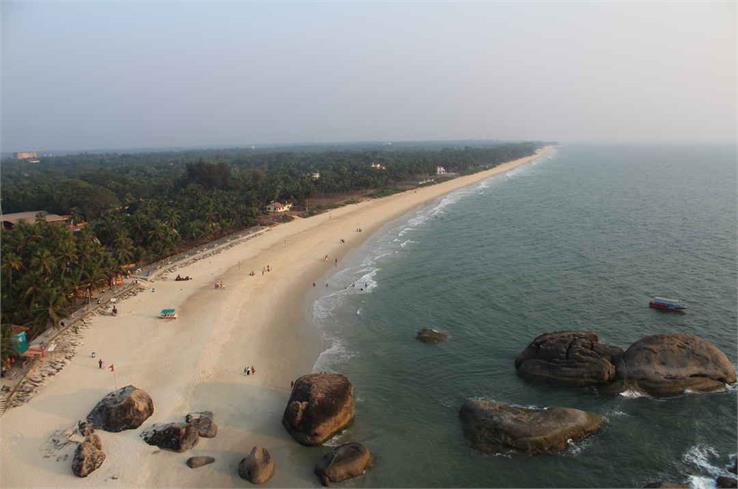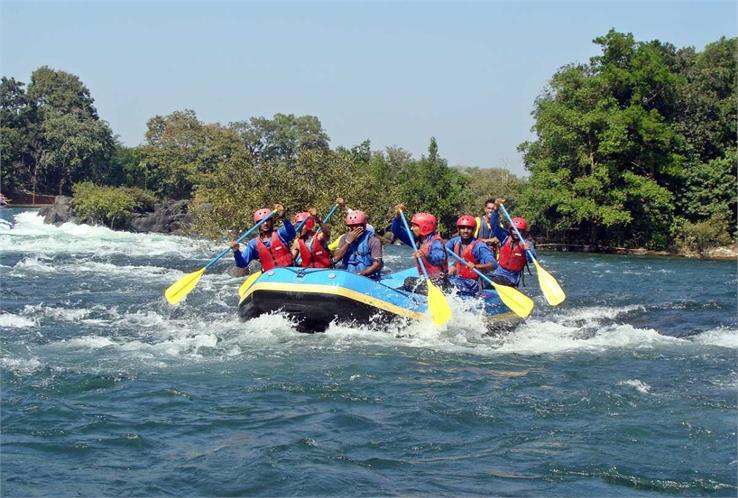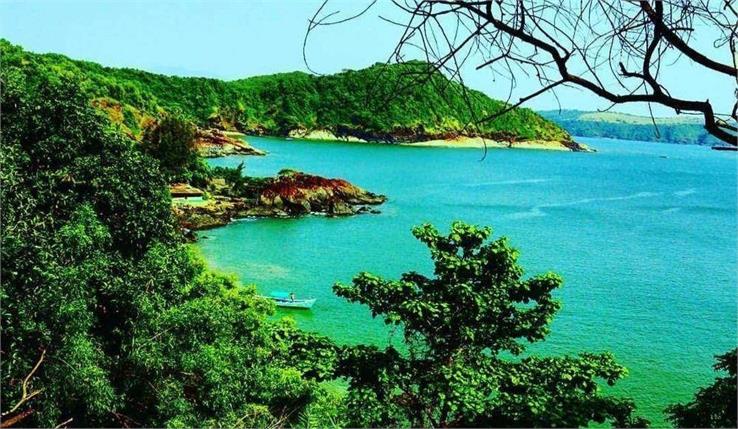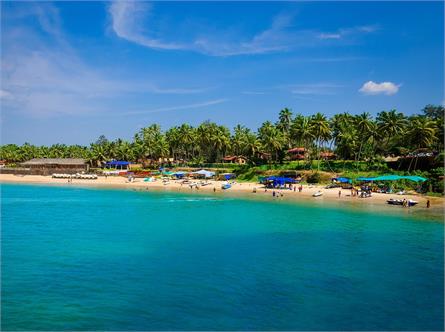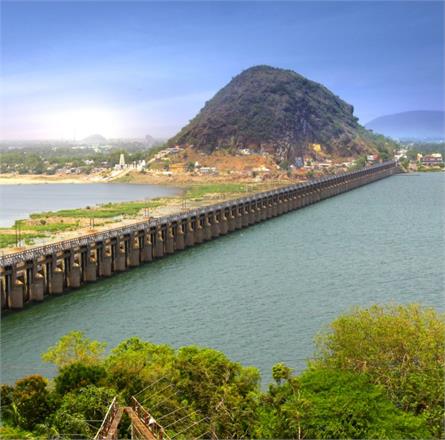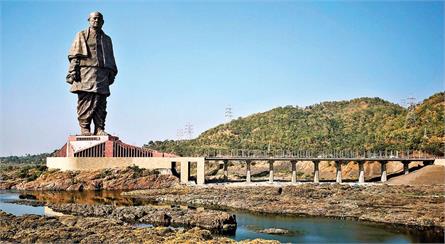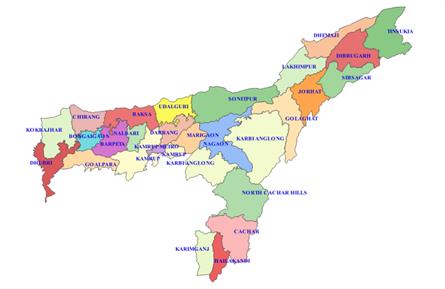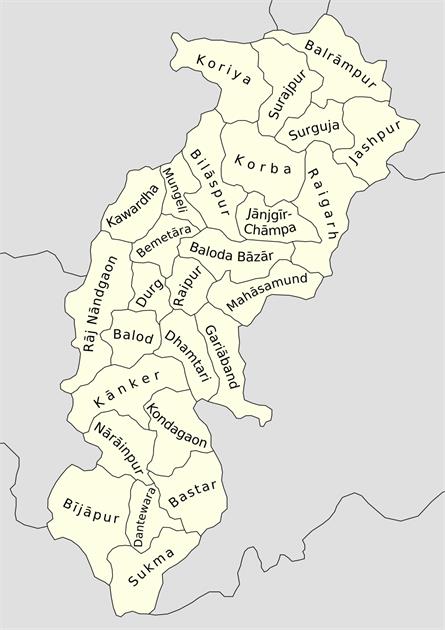Karnataka - Home to Wildlife Adventures and Historical Places
Karnataka is one of the largest states located in South India, which was previously called the State of Mysore, and later it was renamed as "Karnataka" in 1973. Bangalore is the largest city and the capital of this state. The Arabian Sea and Lakshadweep Sea surround the land from the west, Maharashtra to its north, Goa and Andhra Pradesh to the northwest, and Telangana to the east. There is also Kerala in the southwest of Karnataka and Tamil Nadu in the southeast. Karnataka is the ninth largest state in India in terms of population.
History
Karnataka was ruled by various kings named Nanda, Maurya, Satavahana. From the middle of the fourth century, Kadamba of Banavasi, a dynasty of the same region, retained its authority on the state. The giant statue of Gomateshwara at Shravanabelagola was built by Chamundaraya, a world-famous minister of the Ganga dynasty. The Chalukya dynasty of Badami (from 500-735 AD) ruled the vast tract from the Narmada to Kaveri, and Pulikeshi II (609-642 AD) defeated the mighty king Harshavardhana of Kannauj. The dynasty had built many beautiful artistic and classical monuments at Badami, Aihole, and Pattadakal.

Later, the Rashtrakutas of Malkhed (753-973 AD) on the place of the Chalukyas successfully captured Kannauj. At the same time, the development of Kannada literature started. The prominent Jain scholars of India were the charm of the king's court. The Chalukya kings of Kalyan (973–1189) and the Hoysala rulers of Halebid built artistic temples and promoted fine arts and literature. The Vijayanagara Empire (1336–1646 AD) followed these traditions and promoted arts, religion, Sanskrit, Kannada, Telugu, and Tamil literature. During his time, the business also expanded a lot. Azim Ud Daulah was made a Nawab of Karnataka by Governor-General Lord Wellesley (1798–1805 AD) in 1801 AD.
The remains of Stone Age axes and large daggers found in this area illustrate the history of this state. Evidence of megalithic and neolithic culture has also been found in Karnataka. Gold discovered in Harappa was also imported from this state. These facts convinced scholars and researchers that there were connections between the Indus Valley Civilization and ancient Karnataka. In 1565, Karnataka and other parts of South India saw geopolitical changes. After India gained independence, Jayachamarajendra Wodeyar allowed the merger of his kingdom with India. Mokshagundam Visvesvaraya played an important role in the development of industry and manufacturing in Karnataka.
The Mysore dynasty took the initiative for the development of industrialization and cultural growth. During the freedom struggle, a campaign of unity was launched in Karnataka. After Independence, the state of Mysore was created in 1953 with all the Kannada dominant areas. Soon after, an enlarged Mysore was formed in 1956 which was renamed as ‘Karnataka’ in 1973. During the disintegration of the Vijayanagara Empire, many Hindu Jagirdars established their independent states. A small state like this was also Ikkeri (Bednar), which belongs to Karnataka.
Geography
Physically, Karnataka is divided into four distinct regions - the coastal plain, the mountain ranges (Western Ghats), the Karnataka plateau in the east, and the black-soil zone in the northwest. The coastal plains are an extension of the Malabar coast and receive heavy rainfall from southwest monsoon between June to September. The sand dunes along the coast turn towards the land into small alluvial plains, which have lagoons surrounded by coconut trees. It isn't manageable to reach the coast by any route other than the sea. In the east, the land rises rapidly as the slopes of the Western Ghats, where the average elevation is 760-915 meters above sea level. The forested highlands of the Ghat are called Malnad; the region is also a water-divider, and several rapid streams flow from its top towards the plains, including the 253-meter-high Jog (Jarspa) waterfall Sharavati river. Other rivers flow through the undulating Karnataka plateau, with a slight slope to the east. The average elevation of the plateau is about 457 meters above sea level. Generally, its soil is porous and unproductive. The dam has been built on small streams for the construction of reservoirs in the region since ancient times, and most of the hydropower has developed in recent years. In the northwestern part of the state, Regar, an area of volcanic rock, contains fertile cotton-rich Indian black soil.
There are three central geographical regions of Karnataka. These include the coastal area of Karavali, the hilly region of Malenadu, which consists of the Western Ghats, and the Bayalusimi region, which comprises the Deccan plateau. The highest mountain of the state is Mullayanagiri Peak, which is located in Chikmagalur district. Its height is 1,930 m. The main rivers of the state are Kaveri, Krishna, Sharavati, Malaprabha, and Tungabhadra.
Climate
Moving from west to east on the plateau, Malnad converts into an open area called the 'Maidan.' There is less rainfall in the maidan, and monsoon forests take the place of shrub forests. The monsoon forests are rich in wildlife, including tiger, elephant, gaur (Indian bison), and deer. Wild boar, bear, and leopard live in the plains. Peacock is one of the most common birds found here. There are wildlife sanctuaries in Dandeli in the city of Karnataka and national parks in Bandipur and Nagarhole.
Economy
About 64.6 percent of the people of Karnataka are engaged in agricultural work. Intensive farming takes place in the coastal plain, where the major food grains are rice, and the principal cash crop is sugarcane. Other principal crops include sorghum and finger millet, cashews, cardamom, betel nut, and grapes. There are coffee and tea plantations on the cool slopes of the Western Ghats. Due to irrigation in the eastern region, it has become possible to cultivate sugarcane and small quantities of fruits like rubber, bananas, and oranges. Cotton, oilseeds, and groundnut crops are grown in the black soil found in the northwest.
Teak, sandalwood, and bamboo are found in the forests of the Malnad region in the west, and other forest products including the tanned lacquer (a gum-like substance used in the manufacture of varnish). Other trees include Eucalyptus and Sheesham. Sandesh oil is processed in Mysore city and is the leading export material of the state.
Minerals
In some places, Karnataka has rocks of Precambrian age with high mineral deposits, which are at least 57 million years old. Karnataka has the largest production of chromite in India; It is one of the two states in the country producing magnesite (the other being Tamil Nadu). High-quality iron ore deposits are mainly in Chikmagalur and Chitradurga districts; Minor mica copper ore, bauxite, garnet are also mined. Gold in India is obtained from the Kolar gold zone located in this region.
Agriculture
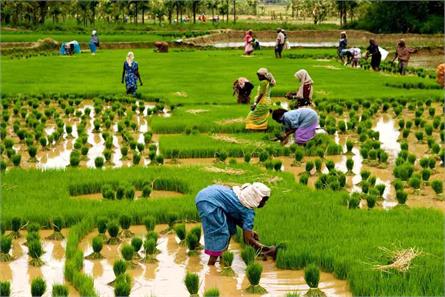
About 66 percent of the population in the state of Karnataka is rural, and 64.6% of the population is engaged in agriculture and related employment. Sixty percent of the state, about 114 lakh hectares of land is cultivable. Seventy-two percent of the total arable land receives good rainfall, the remaining about 28 percent of the land has an irrigation system. The main soil of Karnataka is red, and the sown area of the state is 51.7 percent of the total land. About 117.35 lakh tonnes of food grains have been produced in the year 2007-08.
Industry
The state's mineral resources provide support to iron and steel industries in Bhadravati and heavy engineering factories in Bangalore. Other industries in the state include cotton textile mills processing, textile manufacturing, food items, electric machinery, fertilizer, cement, and paper industries. Mysore and Bangalore both have an established silk industry in ancient times, where the majority of India's mulberry silk is produced. The Sharavati Project, located near Jog Falls, is the largest of many hydroelectric plants that provide electricity to industries in Karnataka.
Irrigation
In the state of Karnataka, 28 percent of the arable area is irrigated. During 2006-07, there was a total irrigation potential of 33.14 lakh hectare land, out of which 23.21 lakh hectare is dedicated to large projects, while 9.93 lakh hectare is allocated for minor irrigation projects.
Electricity Generation
Karnataka is the first major power station in the country where hydroelectric plants were installed. Now, Karnataka has a gross power generation capacity of 7222.91. The 31,229 crore units of electricity were produced in 2007-08.
Information Technology
Karnataka is incomparable in the field of information technology.
- In 2006-07, software worth Rs 48,700 crore were exported from the state.
- As of November 2007, Rs 24,450 crore had been exported.
- According to the latest report by NASSCOM, Mangalore and Mysore are progressing in the field of information technology at a faster pace.
Biotechnology
- Karnataka is estimated to have more than 1.2 lakh known species, including 4,500 flowering plants, 800 fishes, 600 birds, 160 reptiles, 120 mammals, and 1,493 medicinal plants.
- The state of Karnataka and primarily the city, Bangalore has the largest bio-reserve in the country.
Milk Production
- Karnataka is one of the significant milk-producing states of the country.
- The Karnataka Milk Federation has 21 processing plants with a capacity of about 26.45 lakh liters per day.
Gardening
- Horticulture grows in an area of 16.30 lakh hectares of the state.
- The central government has invested Rs 171.29 crore under the “National Horticulture Mission.”
Government and Administration

Like other states of India, Karnataka also has a parliamentary government with two constitutionally elected houses. There is a Legislative Council and Legislative Assembly. The Legislative Assembly consists of 224 members who are elected every five years. While the Legislative Council is a permanent body with 75 members. Its 25 members retire every two years. The members of the Legislative Assembly elect the Chief Minister. The Chief Minister works with his various ministers on different subjects and takes all the Chief Executive decisions. The Governor is the formal and constitutional head of state. On the recommendation of the Central Government, the President elects the Governor for five years.
Education
According to the latest census, the literacy rate of Karnataka is 75.36 percent. The literacy rates of men and women are 82.85 percent and 68.13 percent, respectively. Primary research and educational institutions of India like IIS, IIM, NIT Karnataka, and National Law School are here. The number of primary schools in Karnataka is around 54,529, with 252,875 teachers and 8.495 million students. There are 9,499 secondary schools with 92,287 teachers and 1.384 million students. There are three types of schools or colleges in Karnataka; Aided private schools, non-aided private schools, and government schools.
Cultural Life
Karnataka has a rich cultural heritage due to the contribution of various dynasties, in which several religions and philosophies have emerged. They have made an impact on literature, architecture, folk songs, music, painting, and miniature arts. The influence of Chalukya and Pallava dynasties is still evident in the architecture of seventh-century temples. Similarly, the Muslim rulers not only laid the foundation of Islam but also changed the architecture of the state. Christianity, also heavily influences the western coastal region of Karnataka.
Karnataka has diverse religious and linguistic castes. Apart from this, the rich history of the state has contributed a lot to its cultural heritage. The state is also home to the Kodavas, Konkanis, and Talus. Tibetan Buddhists and people from the Yerawada, Siddhi, and Toda tribes also form a small part of the population here. The traditional and folk arts include all kinds of drama, dance, and music, etc.
Language
Kannada is the official language and is the most spoken in the state. The role of Kannada is vital in the establishment of Karnataka. In 1956, linguistic demographics were instrumental in defining the state. Konkani, Tulu, and Kodava are also native languages and have a history associated with them. The Muslim population speaks Urdu, and Tulu language is mainly spoken in coastal districts and some areas of Dakshina Kannada and Udupi.
Transport

Roads
The network of roads in Karnataka is excellent. The length of roads in Karnataka was 83,749 km in 1971, which increased to 2,15,849 km in 2007. Fifteen national highways connect Karnataka. The Karnataka Road State Transport Corporation (KSRTC) runs regular bus services across the state.
Ports
Karnataka has only one major port on the coastline of 115 nautical miles (300 km) located in Mangalore, i.e., New Mangalore. There are ten small ports in Karnataka: Karwar, Belekeri, Tadadi, Bhatkal, Kundapur, Hangarkatta, Malpe, Padubidri, Honnavar, and Old Mangalore.
Airways
There has been a lot of development and growth in the field of civil aviation. In 2006–07, there was an increase of 50 percent in international passengers and 44 percent in inland travelers. In 2006-07, 1.66 lakh tonnes of freight were transported from the state airports.
Karnataka has four domestic and two international airports. The most important airport in the state is the International Airport of Bengaluru (Bangalore).
Railways
Karnataka has an extensive railway network, with a length of 3,089 km. Some parts of the state fall in the South-West Zone of the Indian Railways, while the rest of the area comes under the South Railway and Konkan Railway networks. All major tourist destinations can be reached through trains plying in the state.
The Government of Karnataka has recently launched the Golden Chariot train, which connects the popular tourist destinations of the state and Goa.
Fairs and Festivals
Karnataka is a land of fairs and festivals. The state has its own set of festivals, which have a special significance for the people of Karnataka. The celebrations reveal the rich cultural features of Karnataka in an obvious way. The state has a multi-religious population, and many religious festivals are celebrated cordially.
In addition to religious festivals, some festivals display the cultural wealth of the state, which appears in countless colors and forms. A host of festivals in Karnataka are associated with the lifestyle of people and celebrated with equal pomp and show.
Some popular festivals of Karnataka are as follows:

- Dussehra
- Ganesh Chaturthi
- Hampi Mahotsav
- Gauri Mahotsav
- Makar Sankranti
- Ugadi
- Mahamastakabhisheka (Grand Consecration/The Great Indian Festival)
- Pattadakal Dance Festival
- Kambala festival
- Vasanta Habba
- Bheemana Amavasya
- Hoysala Mahotsav
- Karnataka Rajyotsava (Kannada Day)
- Kanakadasa Jayanthi
Best time to Visit
Karnataka is neither too hot nor excessively cold. Monsoon remains active from June to September. The time from October to January is best for traveling in the state. The maximum temperature in the state is 40-degree centigrade, and the minimum temperature is 10-degree centigrade.
How many days are enough to travel in Karnataka?
Karnataka is a vast and magnificent state. Due to which there is a unique combination of historical heritage, seashores, and religious sites. Tourists should plan their holidays and visit a particular part of the state. Three to four days are enough to traverse a specific part of the state.
Popular Items to Shop
There is a wide range of handicrafts in Karnataka, from government emporiums to malls and private shops. Some of the most popular products of the state are:
- Sandalwood statues
- Carved metal, stone, and wooden objects
- Mysore Silk Sarees
- Sandalwood oil
- Incense (अगरबत्ती)
- Mysore Paintings of Mysore
- Lambani Jewelry
- Bijapur Handlooms
- Bidriware artifacts (made of zinc and copper)
- Udupi cuisine of coastal Karnataka
What to Eat
The lip-smacking dishes of Karnataka are enough to bring water to the tongue. The state has a variety of cuisines, both vegetarian and non-vegetarian. Neighboring states can also be seen to have a deep impact on the state's food and beverages. Kannada cuisine is the oldest and most fancied food. From traditional Kannadiga cuisine to Udupi, Mangalorean and Kodava, eating habits in the state make a big difference from the south to the northern part.
Some of the most liked dishes of the state:
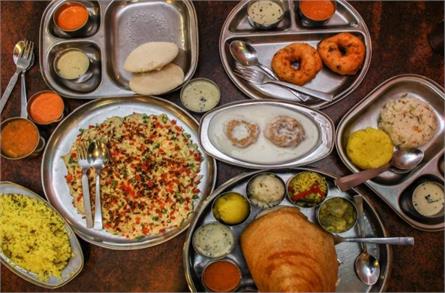
- Mysore Masala Dosa
- Kane fry ladyfish (Mangalorean Style)
- Mamsa saaru (Mutton Curry - Kannada Style)
- Kesari bat
- Patrode
- Masala Dosa in Udupi
- Pandi Curry (Kodava Style Pork Curry)
- Dharwad Pedha in North Karnataka
- Dosa Pandi Curry with Raita
- Thatte Idli (Plate Idli)
- Mysore Pak (Sweet)
- Shavige Payasa (Sweet)
Places to Visit
Among all the states of India, Karnataka is the fourth most famous state for tourist destinations. The state is prosperous geographically and historically. Karnataka has a complete glimpse of ancient craftsmanship. However, also moving towards modernity. Karnataka has the second-highest number of nationally protected monuments, thousands of Forts, Hoysala architecture temples and world heritage sites at Hampi, Badami, Aihole and Pattadakal.
Surrounded by high mountain ranges and forest wealth, it has a beautiful and artistic nature. The state is very important from a spiritual point of view. There are many temples in which people come from far away to explore the place.
Bangalore - The Silicon Valley of India

Bangalore - The Silicon Valley of India, is a city of colorful cultures and an industrial hub of the country. It is one of the best tourist destinations in Karnataka. There is a lot to see and explore in the city.
- Bangalore has pleasant and comfortable weather during the year. But summer is the best time to visit the city. Must visit the Bannerghatta Biological Park, Bangalore Palace, and the Butterfly Park of Tipu Sultan's Palace.
- The local cuisine here is delicious and fun!
Mysore - The City of Palaces

Mysore is one of the most desirable tourist places in Karnataka, which is referred to as "The City of Palaces." It is quite famous in the country due to its royal heritage, intricate architecture, its renowned silk sarees, and sandalwood history. Located at the foothills of the Chamundi Hills, Mysore's rich cultural heritage attracts millions of tourists year-round. Mysore is a city that was once considered as one of the three largest princely states of the British Empire of India. Mysore Palace is one of the most magnificent palaces in the entire country and is a top-rated tourist destination.
Coorg - Scotland of India
Coorg endowed with aromatic coffee plantations, lush greenery of mountains and waterfalls covering misty mountains, Coorg is called 'Scotland of India' and is one of the best places to visit in Karnataka.
Hampi - The City of Ruins

The historic UNESCO World Heritage Site has showcased the architectural splendor of the Vijayanagara Empire. Hampi has about 500 architectural structures.
- Don't forget to visit the Archaeological Museum and the Vijaya Vittala Temple. Virupaksha Temple is an architectural marvel.
Jog Falls - Largest Waterfall

The stunning Jog Falls are the second largest waterfall in the country. It is the most preferred destination among Karnataka tourist destinations.
- Do check out the nearby Linganamakki Dam.
Mangalore - The Chief Port city of Karnataka
In Mangalore, one should not miss to roam across the beaches and sunbathe, fabulous seafood, watch the sun sink, and visiting the shipyard.
- Must visit the beautiful Tannirbhavi Beach and Panambur Beach.
- The various temples and Chapel with stunning architecture are incredible to see.
- Experience delectable seafood.
Dandeli - An Adventurous Place

Dandeli is an incredible place between nature and adventure. Surrounded by forests and wildlife, this natural hilly terrain is an adventurous place. Dandeli is unquestionably one of the best places to visit in Karnataka.
- Dandeli is known for adventure sports, night camping, nature walks, boating, and fishing in the Kali River.
- Must enjoy white water rafting in the Kali river.
- A trip to Dandeli Wildlife Sanctuary is a must.
Gokarn - Popular Pilgrimage Destination

Travelers looking for perfect peace must visit this artistic, well-maintained, and under-commercialized ocean town, which has won backpackers' hearts with its charm.
- To experience great architecture, one must visit Mahabaleshwar Temple and other temples.
- Watch the sunset from the beautiful Om Beach.
- Try water sports like water riding, snorkeling, and parasailing.
Karnataka is a bouquet of attractions in India. There is a lot to see everywhere in Karnataka from Belgaum in the north to Bangalore in the south. The state is full of beautiful landscapes, rich cultural heritage, serene beaches, superb food, and outstanding tourist spots.


